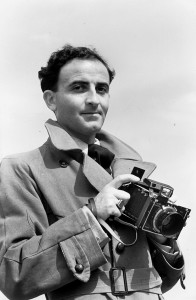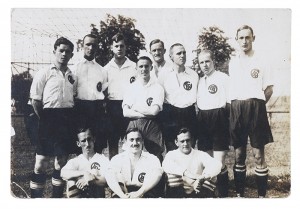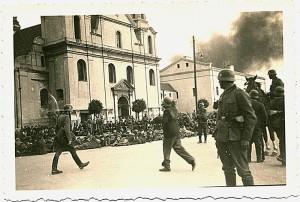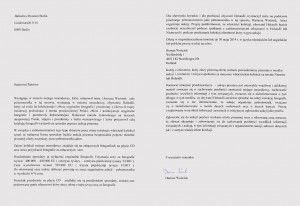108 years ago, on 29 September 1906, in the Neukölln neighborhood of Berlin, the photographer Herbert Sonnenfeld caught his first glimpse of the light of the world.
His photographs constitute one of the largest and most important portfolios in the Jewish Museum Berlin’s photographic archive. The Sonnenfeld collection consists of some 3000 negatives taken between 1933 and 1938. Along with Abraham Pisarek and Arno Kikoler, Sonnenfeld is one of the few Jewish photographers to document Jewish life in and around Berlin in the 1930s, passing down to us today an unparalleled photographic witness to that period.

Herbert Sonnenfeld, photograph by Leni Sonnenfeld, Berlin ca. 1935
© Jewish Museum Berlin, purchased with funds provided by Stiftung DKLB
Herbert Sonnenfeld first worked as an insurance employee before being laid off as a result of the Nazi regime’s anti-Semitic measures. He came to photography circuitously and was an autodidact. Following a trip to Palestine in 1933, his wife Leni approached various Jewish newspapers and offered them her husband’s pictures. They were enthusiastic, promptly bought up the prints, and asked for more. Thus began Sonnenfeld’s career as a press photographer.
→ continue reading
Gems from our Collection

Harry Engel (1892-1950) with the FC Bayern Munich, Munich, September 1916
© Jewish Museum Berlin, donated by Alfred Engel, photo: Jens Ziehe
On 15 February 1940, after a four-year wait for an American visa then a successful escape from Nazi Germany, the Engel family, hitherto of Munich, reached the safe shores of Manhattan. In the family’s luggage was memorabilia that the then 13-year-old Alfred Engel was to donate to the Jewish Museum Berlin, decades later, from his father’s estate. It includes rare photographs from the 1910s, a time when Harry Engel (1892–1950) was an active soccer player at FC Bayern Munich. → continue reading

Photograph from World War II. The sellers priced it at 3000 euros.
The financial crisis of 2007 had an impact both on the countries of Western and Eastern Europe. The złoty may still glitter but it has long since ceased to be the “golden coin” Polish currency was originally named for. Unemployment and stagnant economic growth, rising real estate prices and declining purchasing power have put the brake on Poland’s economic recovery. The Netherlands has likewise been in recession for years. Declining competitiveness, private debts, state-subsidized home ownership, the low retirement age and the expensive health care system have fed uncertainty and repeatedly paved the path to success for the Freedom Party of the populist xenophobe Geert Wilders.

The Polish letter of offer as we received it.
This downward spiral in state treasury and personal funds led a couple of Polish resp. Dutch wheeler-dealers to scrape the barrel for a bilateral business model. Crafty Dariusz Woźniok and his fly-by-night Dutch client somehow managed to get their hands on infantrymen’s photos from the Second World War—whether as thieves or buyers it is impossible to say. Maybe they were embittered by the fact that no share in the tidy profits made from material goods ever came their way, from the export of Polish geese, strawberries, potatoes and beetroot, for example, or of Dutch cheese and tulips. Maybe they hatched their business plan in an Amsterdam coffee shop and had simply smoked one hash pipe too many. Whatever the case, they figured: “It was a sure bet that snapshots of ghettos and so-called ‘Jewish actions’ in early 1940s Poland could be sold off as ‘Holocaust-ware’ to Jewish Museums—so why not make the most of an historic windfall?” → continue reading



